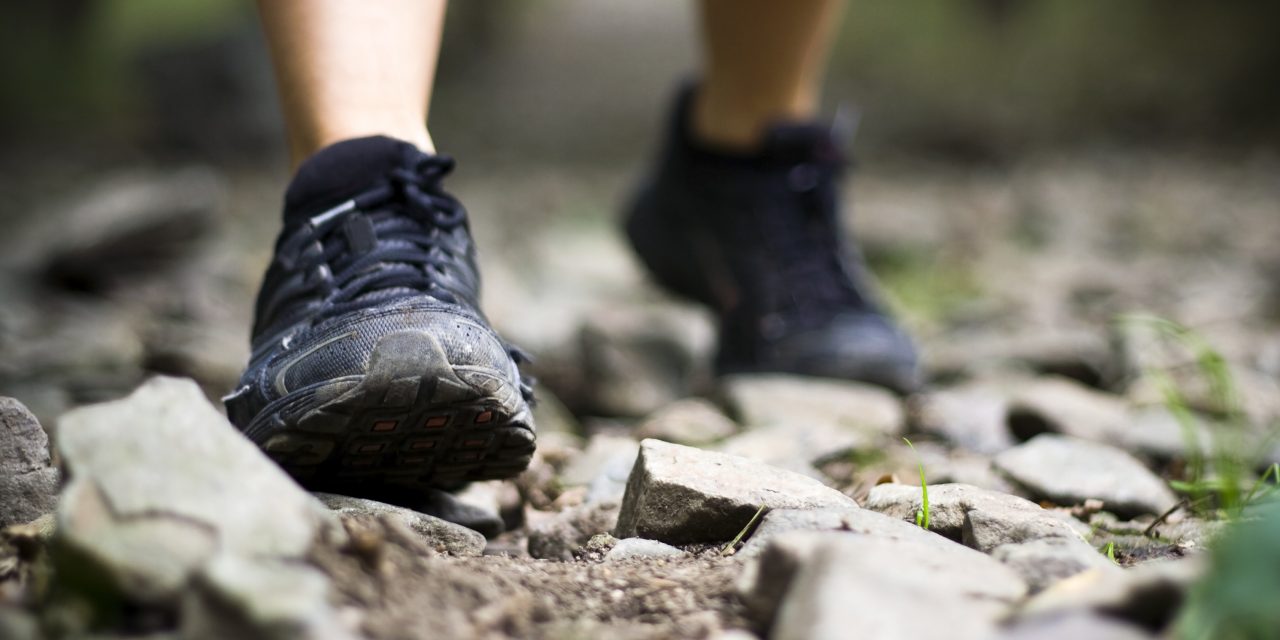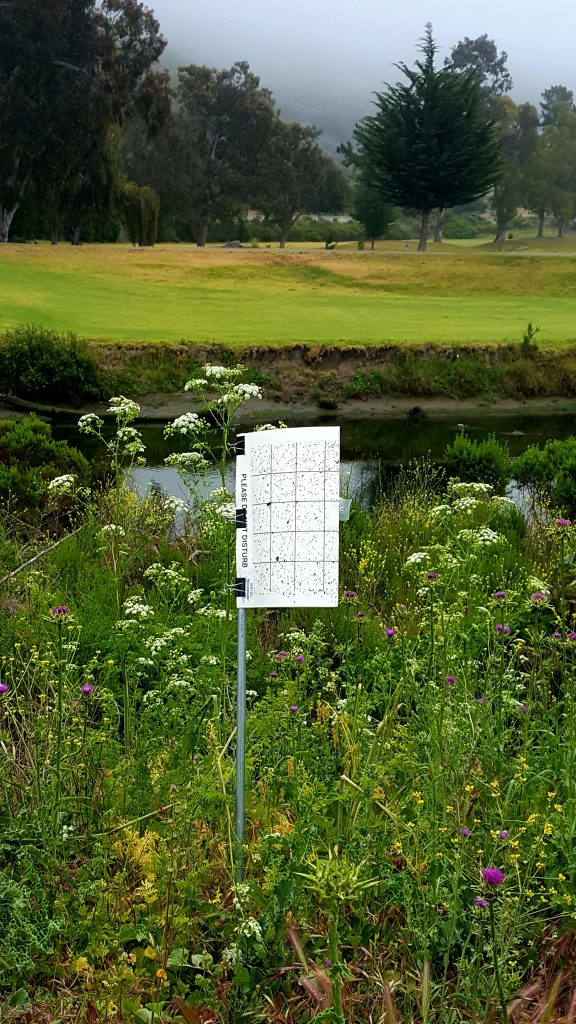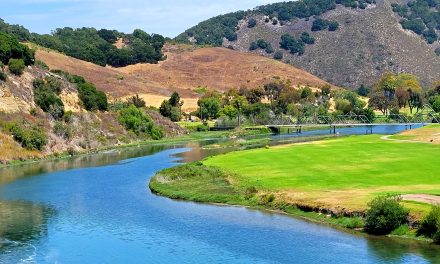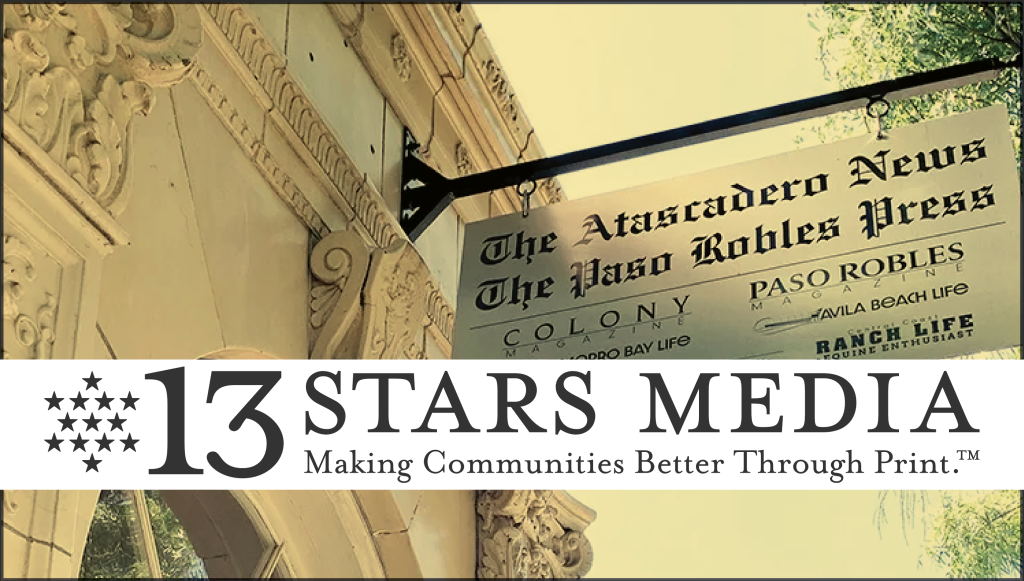Have you noticed the rectangular-shaped cardboard sticky traps along the San Luis Obispo Creek that are adjacent to the Bob Jones Pathway? They are Government Insect Traps that are being monitored by the Department of Agriculture. You can spot the traps with square grids as you travel on Blue Heron Drive, which is the shared road section of the trail. There are plenty of insects accumulating on them. Perhaps you are wondering their purpose. Surprisingly, it has nothing to do with the cloud of pesky gnats that have been swarming that very same area.
In partnership with Cal Fire and the University of California, the County Department of Agriculture Pest Detection Trapping program places and services sticky traps to determine if the Invasive Shot Hole Borer (ISHB) is present in San Luis Obispo County. There are about 200 sticky traps that have been placed throughout the County. The detection survey aims to become aware of the Invasive Shot Hole Borer as soon as possible before they become established in our County. ISHB is a tiny beetle smaller than a sesame seed. ISHB cultivates a fungal disease of plants called Fusarium dieback, which can clog the vascular system of host trees, blocking the transport of water and nutrients. An infected tree declines in health and usually dies.
The traps were placed along the Bob Jones Trail in March 2021 and will remain through October 2021. They are inspected once per month. If a beetle is suspected, it must be sent to a lab to be properly identified. This is an important step since there are two beetles that are remarkably similar. Early and correct identification is key to controlling this destructive pest. Regular monitoring ensures that infestations are managed before a branch suffers dieback or tree death occurs.
It is believed that this destructive little insect was unintentionally introduced into California by wood products shipped from Southeast Asia. ISHB was first identified in Los Angeles County in 2012. It is now identified in 7 Southern California Counties. Once the beetle arrives in a new location, they colonize and spread to neighboring areas affecting more and more trees. Susceptible trees include sycamores, oaks, cottonwoods, commercial avocados, among many others. These small flying beetles are a big problem.
Are you curious how they got their name? The beetles tunnel into the trees, creating perfectly round small holes about the size of the tip of a ballpoint pen. The holes look like shot holes; hence their name properly identifies them. Inside the holes, they lay eggs and farm the fungus, which is their main food source. The entry holes are usually accompanied by a wet, staining, gummy, sappy-like substance.
The sticky traps are useful for warning of a pest presence, activity, and a measure of insect density. They are an important monitoring tool. The Department of Agriculture is earnestly trying to protect California trees. Let us do our part by not disturbing the traps. There are a few more things that you can do, such as use only locally sourced wood for home and recreation. Moving infested firewood and green waste are ways the beetle may be transported, which allows them to populate new areas. Leave wood at home when visiting a park or taking a camping trip. Buy only what you need and always burn responsibly. It is important to keep trees in our region as healthy as possible. California trees are critical to a vibrant and well-functioning environment like the ones we enjoy on our own Bob Jones Trail.








